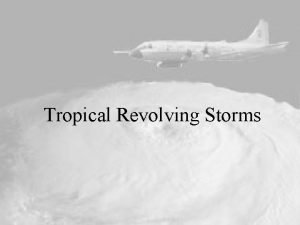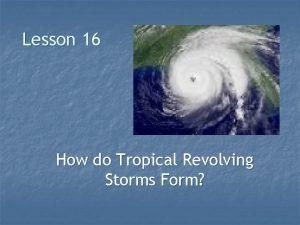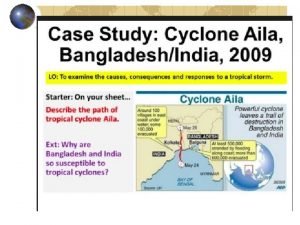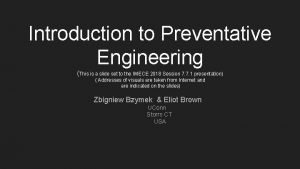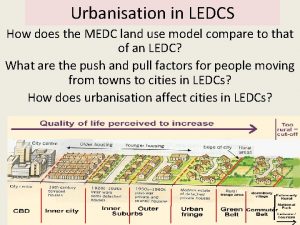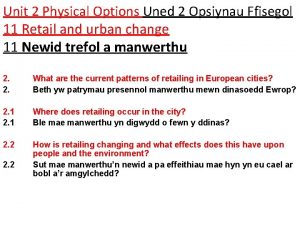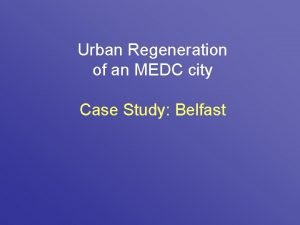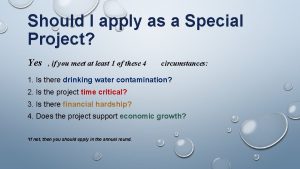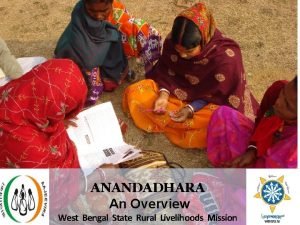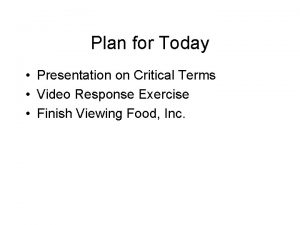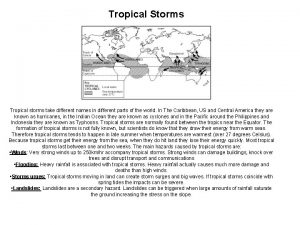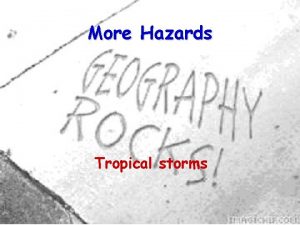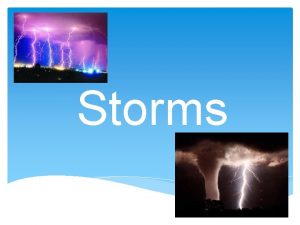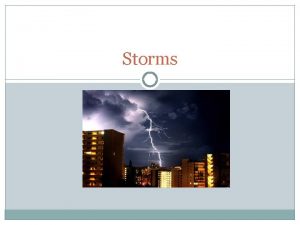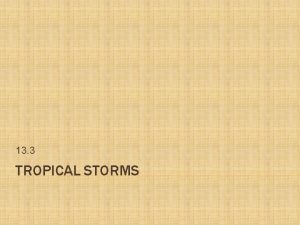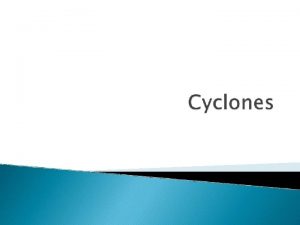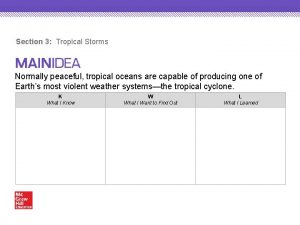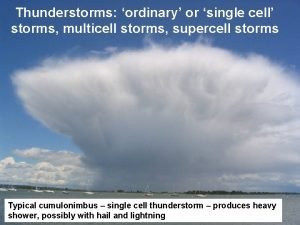Lesson 19 Tropical revolving storms MEDC Specification Tropical















- Slides: 15

Lesson 19 Tropical revolving storms MEDC

Specification Tropical revolving storms. Their occurrence, their impact and responses to them. Two case studies of recent (within the last 30 years) tropical revolving storms should be undertaken from contrasting areas of the world. Interrelationship between the physical processes and the human and built environment

Hurricane Katrina Over the coming lessons you need to gather DETAILED case study information on two tropical revolving storms from contrasting areas of the world. These could be examined within the questions on weather and climate OR be the synoptic essay linked to weather and climate. Without detailed case study information, you will score poorly.


Primary effects of Tropical Storm are…

Secondary effects of Tropical Storm are…

Before

After


Launch this hyper link Video and sounds from the Hurricane

Other phenomena which can be just as damaging than the wind frequently accompany tropical storms: high seas - large waves of up to 15 metres high are caused by the strong winds and are hazardous to shipping; storm surge - a surge of water of up to several metres can cause extensive flooding and damage in coastal regions; heavy rain - the tropical cyclone can pick up two billion tons of moisture per day and release it as rain. This also leads to extensive flooding - often well inland from where the tropical cyclone hit the coast; tornadoes - tropical cyclones sometimes spawn many tornadoes as they hit land which can cause small areas of extreme wind damage. These phenomena can cause major destruction, especially when the tropical cyclone's path takes it over land.

What do you need to include in your case study notes?

Some ideas…. . Causes – why do they form, where do they form, what fuels them. Detailed sketches to explain their formation. How many on average per year, are there patterns – are they changing? Effects – Interrelationships between the physical processes and the human and built environment. Short & long term. Where there any Geographical patterns linked to effects. Wealth indicators / ability to cope. Data. Responses – different groups of people; individuals, criminals, neighbourhoods, elderly, holiday operators, local & national government, news stations, NHC etc. Forecasting ability? Planned procedures – what were they, were they effective? An evaluation of the response – was it good/bad? Did the response differ for different groups? Were there any shortcomings? What can be learnt for the future?

Outcomes n n n You will know detailed case study information linked to Katrina. When you have completed research for another storm in a different part of the world you will need to be able to compare and contrast them. Finally you will be set a 40 mark essay to check this work has been understood to the required depth.

Activity over the next couple of lessons and for homework is to complete a detailed report for Hurricane Katrina. A good place to start: http: //news. bbc. co. uk/1/hi/in_depth/americas/200 5/hurricane_katrina/default. stm
 Easterly wave
Easterly wave How do tropical storms form
How do tropical storms form What is the global distribution of tropical storms
What is the global distribution of tropical storms Hurricanes tropical storms
Hurricanes tropical storms Medc
Medc Medc
Medc Medc ledc
Medc ledc Medc city
Medc city Upper specification limit and lower specification limit
Upper specification limit and lower specification limit Natural variations operations management
Natural variations operations management Revolving fund example
Revolving fund example Drinking water state revolving fund
Drinking water state revolving fund Stage clips microscope function
Stage clips microscope function Solar revolving fund
Solar revolving fund Revolving fund in shg
Revolving fund in shg Revolving door
Revolving door
